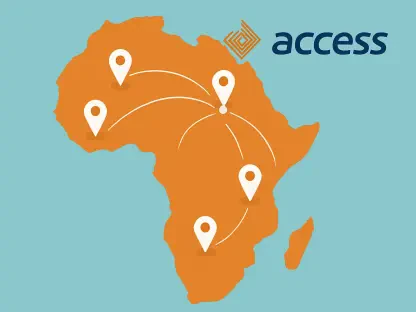Priya Jaiswal is a recognized authority in Banking, Business, and Finance, with extensive expertise in market analysis, portfolio management, and international business trends. Today, we delve into River’s journey and their groundbreaking acquisition of Wind as they strive to build a super app for global citizens.
Can you tell us a bit about River’s origin and its journey so far?
River started with a vision to redefine global mobility through telecommunications and financial infrastructure. We aimed to develop solutions that cater to the unique needs of people living outside their home countries. Over the years, River has evolved into a robust platform, integrating borderless payments and financial tools, powered by our eSIM service. Our journey has been marked by innovation and a commitment to closing the loop for global citizens.
What motivated you to acquire Wind, and how does it fit into River’s long-term vision?
The acquisition of Wind was driven by the synergy between their decentralized payments and banking tools and our vision for a super app that serves global citizens. Wind’s platform allows us to further integrate financial services directly within our eSIM-powered experience, enhancing our offerings and positioning us as leaders in global digital finance. This move is not just an acquisition, but an evolution towards building a comprehensive operating system for a borderless life.
How does River’s eSIM service work, and what has contributed to its rapid growth since its launch in 2024?
River’s eSIM service provides seamless global connectivity by eliminating traditional SIM card limitations. Users can stay connected internationally without changing SIM cards, offering unmatched convenience. Launched in 2024, our service quickly gained traction, reaching $10 million ARR in under a year, thanks to its efficiency and the growing demand for reliable cross-border communication.
Could you elaborate on the decentralized payments and banking tools that Wind brings to River?
Wind’s decentralized tools complement our platform by providing borderless financial services such as stablecoin transactions and multicurrency wallets. These tools enable users to send and receive money with significantly lower fees compared to traditional providers, pay bills without needing a bank, and gain access to decentralized banking solutions. This integration paves the way for a more inclusive financial ecosystem, especially for the unbanked and underbanked global population.
What advantages do users gain with the integration of Wind’s platform into River’s app?
By integrating Wind’s platform, River’s users benefit from streamlined financial services, combined with our telecommunications solutions. This includes lower transaction fees, the ability to hold and manage multicurrency wallets, and access to decentralized banking tools. It simplifies financial management for individuals living across borders, allowing them to conduct transactions, build wealth, and maintain financial independence without the restrictions of conventional banking systems.
How does the use of stablecoins in transactions reduce fees compared to legacy providers?
Stablecoin transactions operate on blockchain technology, which significantly lowers the overhead and transaction costs associated with traditional banking systems. By bypassing intermediaries, stablecoins allow for direct peer-to-peer transactions, reducing fees by up to 70%. This cost efficiency is pivotal for our users, particularly for remittances and cross-border payments.
Can you explain the three main components of River’s super app: telecommunications, payments, and banking?
River’s super app integrates telecommunications through our eSIM service, enabling global connectivity. The payments component leverages stablecoins for low-cost transactions and multicurrency wallets, enhancing financial flexibility. Lastly, our banking segment focuses on decentralized tools to support income generation, credit access, and savings management for cross-border users. Together, these components create a seamless and comprehensive platform catering to the varied needs of global citizens.
How does River’s banking feature differ from traditional banking services?
River’s banking feature emphasizes decentralization, enabling users to access financial services without relying on traditional banks. This includes innovative tools for income, credit, and savings, which are designed to be inclusive and accessible to those who are often overlooked by conventional banking systems. Our approach eliminates many of the barriers and gatekeepers, offering a more democratized financial experience.
What challenges have you faced in developing a seamless platform for global citizens, and how have you overcome them?
Developing a platform that caters to the diverse needs of global citizens involves overcoming regulatory, technological, and user experience challenges. Navigating various regulatory landscapes requires securing proper licensing and ensuring compliance. Technologically, we focus on building a robust infrastructure capable of handling multiple currencies and decentralized transactions. To enhance user experience, we continually refine our services based on user feedback and cultural nuances, ensuring our offerings are intuitive and supportive.
What strategies has River employed to achieve profitability and rapid scale without outside investment?
Our strategies revolve around strategic partnerships, organic growth, and a strong product-market fit. By focusing on enterprise clients, such as onboarding migrant workers, we ensure sustained growth and a consistent user base. Our licensing in key markets like the EU and UAE enhances our credibility and expands our reach. Additionally, our emphasis on diaspora populations—with their substantial remittance flows—has fueled our profitability and rapid scale.
How would you describe the collaboration between the founders of River, Lunchbox, and Pathao?
The collaboration between the founders of River, Lunchbox, and Pathao brings together a wealth of experience and shared vision for fintech innovation. Each founder contributes unique insights and expertise from their previous ventures, creating a dynamic leadership team. This united effort drives our mission to build a super app that empowers global citizens and bridges the gap created by legacy systems.
How will River’s partnership with enterprise clients, such as the recent deal for onboarding migrant workers, impact its growth trajectory?
Partnering with enterprise clients, particularly in onboarding migrant workers, significantly boosts our user base and deepens our market penetration. These partnerships enable us to reach large groups of potential users efficiently and position River as a trusted provider of financial and telecommunications solutions for significant demographics. The scale and reliability offered by these collaborations are key drivers for our growth trajectory.
Why is there a strategic focus on diaspora populations, and how does River intend to meet their financial needs?
Diaspora populations send over $800 billion in remittances annually, representing a significant financial ecosystem. Our strategic focus on these groups stems from the challenges they face in accessing affordable and efficient financial services. River intends to meet their needs by providing low-cost, decentralized banking tools, multicurrency wallets, and seamless payment solutions that cater to their unique circumstances and support their financial independence.
What are some of the key regulatory challenges in securing licensing in markets like the EU and UAE?
Securing licensing involves navigating complex regulatory frameworks to ensure compliance and legitimacy. Key challenges include adapting to different financial regulations, meeting security requirements, and obtaining approvals from local authorities. Our approach to overcoming these challenges includes thorough legal research, partnerships with local entities, and a commitment to transparency and compliance.
How does River ensure low-cost financial services for its users worldwide?
River leverages decentralized technology to minimize transaction costs and eliminate intermediaries traditionally involved in banking and payments. By utilizing stablecoins and blockchain, we reduce fees and enhance efficiency, passing these savings onto our users. Our focus on streamlined operations and technology-driven solutions allows us to offer competitive pricing that benefits our global user base.
How important are multicurrency wallets and stablecoin payments in River’s overall strategy?
Multicurrency wallets and stablecoin payments are critical components of River’s strategy to offer flexible, accessible financial services. These tools enable users to manage their finances in various currencies, facilitating seamless transactions across borders. Stablecoin payments offer greater stability and lower fees, which are crucial for individuals and businesses engaging in international transactions.
Could you describe the upcoming decentralized banking tools on River’s roadmap?
Our decentralized banking tools aim to empower users with greater financial autonomy and accessibility. These tools include innovative solutions for income generation, credit access, and savings management. By leveraging blockchain technology, we ensure secure, transparent, and inclusive banking options that cater to the unique needs of our global user base.
What are River’s plans to expand its user base from six figures to several million by the year-end?
To reach millions of users by year-end, River plans to intensify its focus on strategic partnerships, particularly with enterprise clients. We’ll also increase our marketing efforts, enhance product features, and expand licensing in key global markets. By addressing the specific needs of diaspora populations and offering superior financial tools, we aim to attract and retain a growing user base.
How does River plan to build trust among users where legacy systems have failed?
Building trust involves providing consistent, transparent, and reliable services that address user pain points. River’s commitment to low fees, financial inclusion, and security fosters trust among users disillusioned by legacy systems. Additionally, our culturally attuned support ensures that users feel understood and valued, further solidifying their confidence in our platform.
Do you have any advice for our readers?
My advice for readers is to embrace innovation and seek out solutions that cater to your unique financial needs, especially if you’re living across borders. Stay informed about the evolving fintech landscape and explore new technologies that can enhance your financial independence and security.









